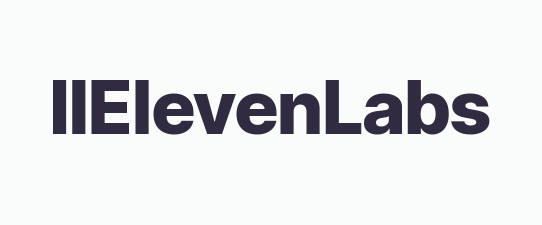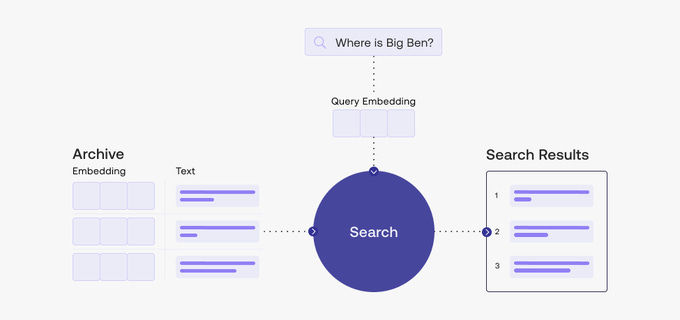Coexistence with Superintelligence and Harnessing the Power of Semantic Search
The Future of AI, Building a Semantic Search Engine, Kirk Borne + more!
👋 This is Deiniol - founder of AI Suite.
We made it! This is the fifth edition of AI Suite to hit inboxes. 368 subscribers, 2 blog posts, who knows how many coffees later and we are still charging like the exponential curve of Stable Diffusion. Thank you for being along for the journey.
I want you to influence the direction of this newsletter so please let me know if you have any feedback.
Ps. 🤗 Know someone who would benefit from some of these resources? Fwd it on, reply back “sent” and I’ll send you an exclusive 50% discount on an annual Writesonic account (great for when ChatGPT is down!).
Pss. I wrote another blog post! ‘How to get started with AI Art in 2023’.
💬 Quote
💻🧑💻 Person
Kirk BorneMeet Kirk Borne, a trailblazer in the world of Big Data, Data Science, AI, Machine Learning, IoT, and more. He's not only been named a top influencer in numerous categories but also constantly leaves his mark in the industry with his groundbreaking contributions.
From inspiring public keynote speeches to providing expert advice, Kirk is a true data scientist in every sense of the word. His extensive knowledge spans from beginner-level AI to the complexities of machine learning astrophysics.
With an incredibly diverse background in:
Public/Inspirational Keynote Speaking
Consulting/Advising
Data Science
Machine Learning
Data Mining
Data Analytics
Big Data
Scientific databases
Scientific data mining
Computational Science
Astroinformatics (Data Science for Astronomy)
Observational Astronomy (ground-based and space-based)
Computational Astrophysics
Kirk truly embodies the phrase, ‘jack of all trades, master of all’. Follow Kirk on Twitter and you’ll quickly learn something. You’ll also be inspired to play Wordle! 😉 🔠
🎙Podcast
Artificial Intelligence and You w/ Peter J Scott | Tony Czarnecki, FuturistAI & You is a fantastic and underappreciated podcast.
The pod itself is not generally for beginners although the host, Peter J. Scott, is brilliant at asking the tricky questions, and, somehow, manages to get answers back in fairly layman's terms most of the time.
This podcast is split into two episodes. And rightfully so. It’s a lot to take in…
Peter interviews Tony Czarnecki, a futurist based in the UK. Tony is a member of Chatham House in London and the Managing Partner of Sustensis, a think tank focused on inspiring humanity's transition to coexistence with superintelligence. He’s also the author of several books on the subject. His latest paper titled ‘How might Transhumans control Superintelligence?’ focuses on the inevitability of the human species transforming into something more advanced with the arrival of superintelligence. Peter and Tony jump into the underlying premises in detail.
Tony discussed transhumanism and the idea that the more AI evolves, the closer we get to needing to evolve ourselves. The term ‘transhuman’ is a nod to the transformation of the human race and the idea that it would involve the ability to communicate rapidly with superintelligent AI through some kind of brain-computer interface.
This interview goes deep into the weeds. It forces you to think about the alignment problem and what is plausible over the next 7-8 years.
While I don’t agree with some of the ideas raised by Tony, it is extremely insightful nonetheless and it is (almost) always beneficial to hear both sides. It’s certainly intriguing.
⚙️ Tool
ElevenLabsI've tried a lot of speech software, but ElevenLabs' realistic and versatile voices are tough to beat. The software is incredibly user-friendly, making it easy to create great outputs with minimal editing required. Emotions, inflection, and tonality are all spot-on. And, if you're not satisfied with the preset voices, you can even create your own synthetic voice! That's right, a voice that doesn't exist - how cool is that?
ElevenLabs is currently in beta, and their pricing plans offer incredible value for what they provide. And with a free tier of 10,000 characters per month, there's no excuse not to try them out. They’ve also just raised $2M so expect things to get even better. If you're looking for a tool that will help you take your storytelling to the next level, ElevenLabs is the answer.
🧑🏫 Demo/Tutorial
CohereAI | How to build a simple semantic search engineSay goodbye to keyword-matching and hello to a new world of context-based searching. Thanks to large language models, our computers have the ability to understand and search by meaning.
But what exactly is a semantic search engine and how can you build one? Don't worry, CohereAI has you covered. They show you how to simplify the process and create a simple semantic search engine.
This is a tweet thread of great value. What you see is copied word for word:
Thread
Step 1: Get a list of text to search from Here, we use an archive of questions as an example. They come from the “trec” dataset, which is made up of questions and their categories.
Step 2: Embed the archive of questions Next, we turn each question into text embeddings using the Cohere Embed endpoint.
Step 3: Turn the embeddings into indexes Next, we turn each embedding into a search index. For example, we can use a library called “annoy,” created by Spotify, to do nearest neighbor search, which finds the point in a given set that is closest to a given point.
Step 4: Find the closest match to a query Now, we can use this to search in the archive based on a given query. Here, the query is: "What is the tallest mountain in the world?" The code snippet below shows the steps.
And here’s the result. The following table gives the Top 10 results from the archive, with the closest match at the top.
🖼️ Images
@StelfieTT | The Match with Ali, 1963.📚 Education simplified
Defining Data LabellingData Labelling... It's been a hot topic lately so we wanted to provide some clarity for those who are new to the field.
Think of it like organising your files on your computer. You label each file so you know what it is and where to find it. In a similar way, metadata helps our machine learning models understand what they're looking at.
When we train an ML model, we give it a lot of examples to learn from. But sometimes, these examples need a little extra help to make sense. That's where metadata comes in. We add extra information, called ‘data labels’ to these examples so the model knows what it's looking at and what it's supposed to do with it.
Data labels can be added by people who use their expertise to determine what the label should be, or by other computer programs that have already been trained. This allows the model to continue learning and making better decisions in the future.
💡 Startup Idea
WearWell AIReady to Revolutionise Your Online Shopping Experience?
Meet WearWell AI: The AI-Powered Outfit Try-On System.
Tired of guessing what an outfit will look like on you? Want to try on the clothes you’re thinking of buying before you buy, without having to leave your desk?
If Keith Richards can do it, you can too!
WearWell AI uses generative AI to create a 3D model of you based on your body measurements and preferences, allowing you to try on an endless array of outfits in various real-life settings. With the ability to see how clothes fit and look on your generated self, you can make informed purchasing decisions with confidence. No more poor fits or returns. Only seamless online shopping with WearWell AI.

🏆 Sponsor Us
Would you be interested in sponsoring our next newsletter, which will be distributed to a diverse audience of AI enthusiasts, startup founders, aspiring entrepreneurs and artificial intelligence students?
Reply to this email and I’ll get back to you asap.











